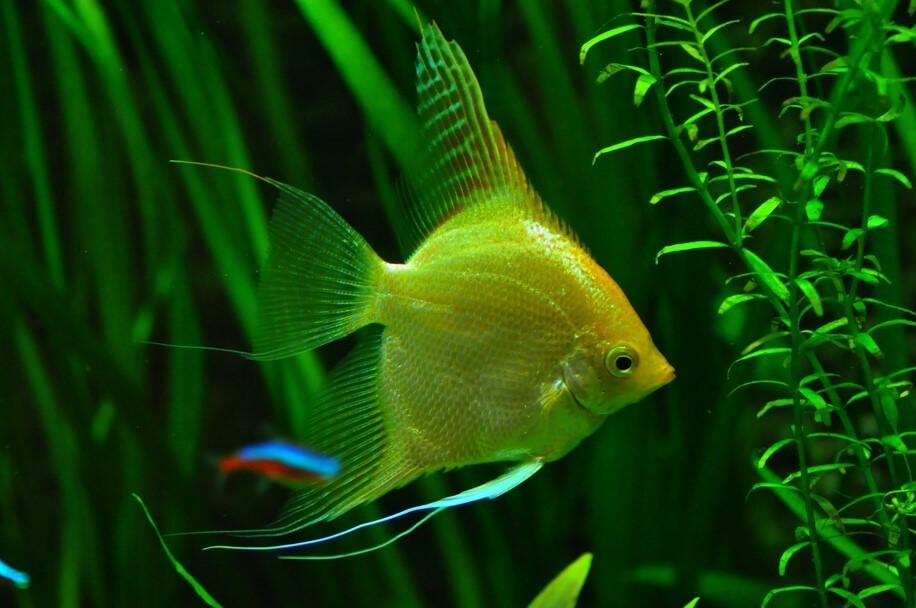Sharing is caring!
Angelfish are a favorite in the freshwater community due to their grace and beauty not typically found in freshwater tanks.
Angelfish are a member of the Cichlid family along with Oscars and Red Devils. Sexing them becomes easy once they mature and can be determined by the shape of their head and shape of their papilla.
Freshwater Angelfish Quick Facts
| Scientific Name: | Pterophyllum |
| Common Names: | Angel, Angelfish, Freshwater Angelfish |
| Diet: | Omnivorous |
| Salinity: | Freshwater |
| Tank Size: | 30 Gallon Minimum |
| pH: | 6 – 8 |
| Behavior: | Semi-Aggressive |
| Max Size: | 6 Inches |
| Lifespan: | 10 Years |
| Temperature: | 76 to 84 ℉ |
| Origin: | South American |
Angelfish Origins
Angelfish are native to South America and can be found in slow-moving rivers and streams with plenty of cover.
Angels were first described in 1823 as Pterophyllum scalare by F. Schultze. Its common name was shortened to P. Scalare. and again to Angelfish later on. The “Freshwater” was added to differentiate between their saltwater counterparts.
Today most aquarium Angelfish are bred in captivity and are the most common of all Cichlids that are kept as pets.
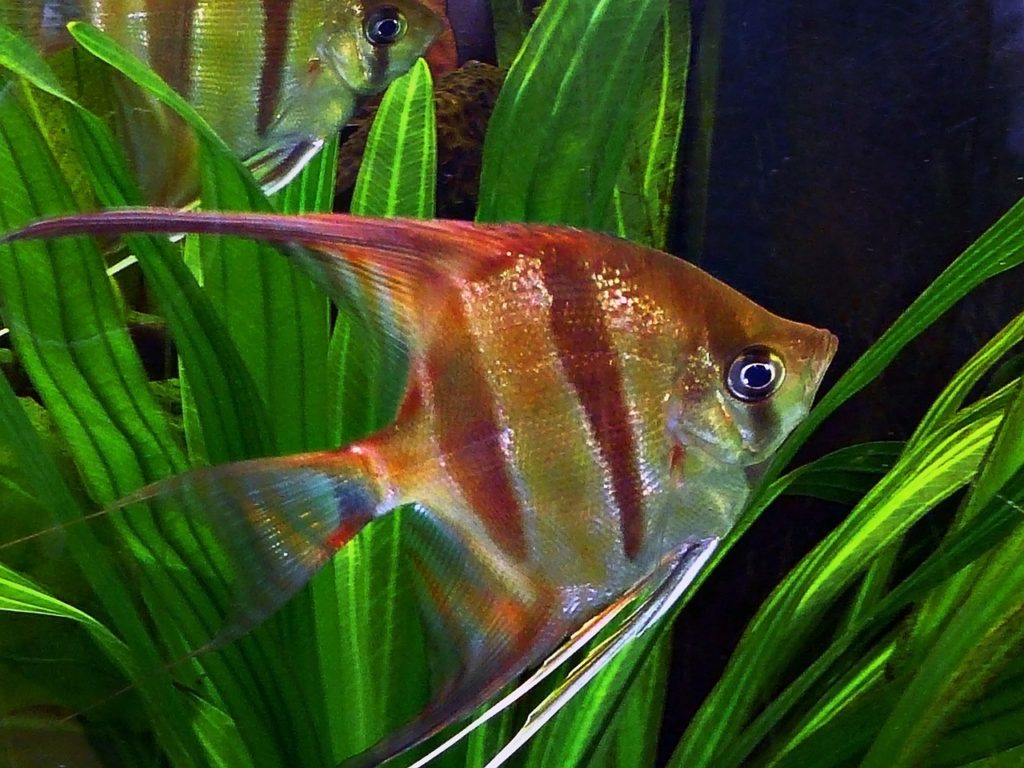
The Perfect Angelfish Tank Setup
- 30 Gallon minimum. Although 6 inches isn’t that large their heights can exceed 10 inches. A tall tank is ideal.
- Prefers a planted tank with plenty of shade. Live plants are preferred but not required.
- 76-84 ° F. Heat as necessary.
- Peaceful with other large fish when not breeding. Should not be kept with small fish.
- Proper filtration is required. Ensure to keep the currents low.
- Small pebble or sand substrate. Don’t use anything with sharp edges. Soil base if needed for live plants.
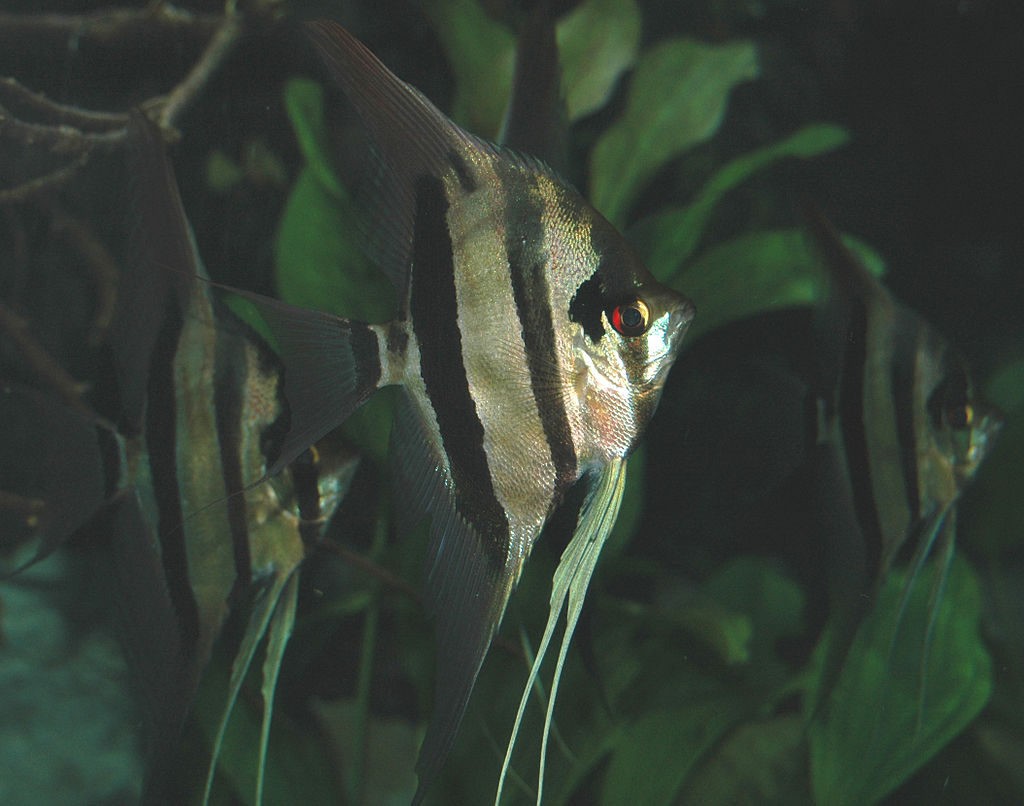
Angelfish Diet
Freshwater Angelfish are omnivores, therefore, they require a balanced diet of both meat and vegetable-based meals. Be sure to choose a flake or pellet food made for tropical fish or Cichlid specifically. Supplement meals with brine shrimp and blood worms
Feed your Angelfish two times a day no more than they can consume within 5 minutes or so. Any food that they don’t eat will sink to the bottom and both exaggerate the cleaning requirements but also increase the ammonia in the water. Water quality is especially important in smaller tanks or bowls
Compatibility
Angelfish are generally peaceful and can be housed with many different types of fish. There are however some rules of thumb that should be followed.
Angels should not be housed with any fish that is small enough to fit in its mouth. Although peaceful, food is food. They should also not be housed with the smaller aggressive fish that could nip at their fins.
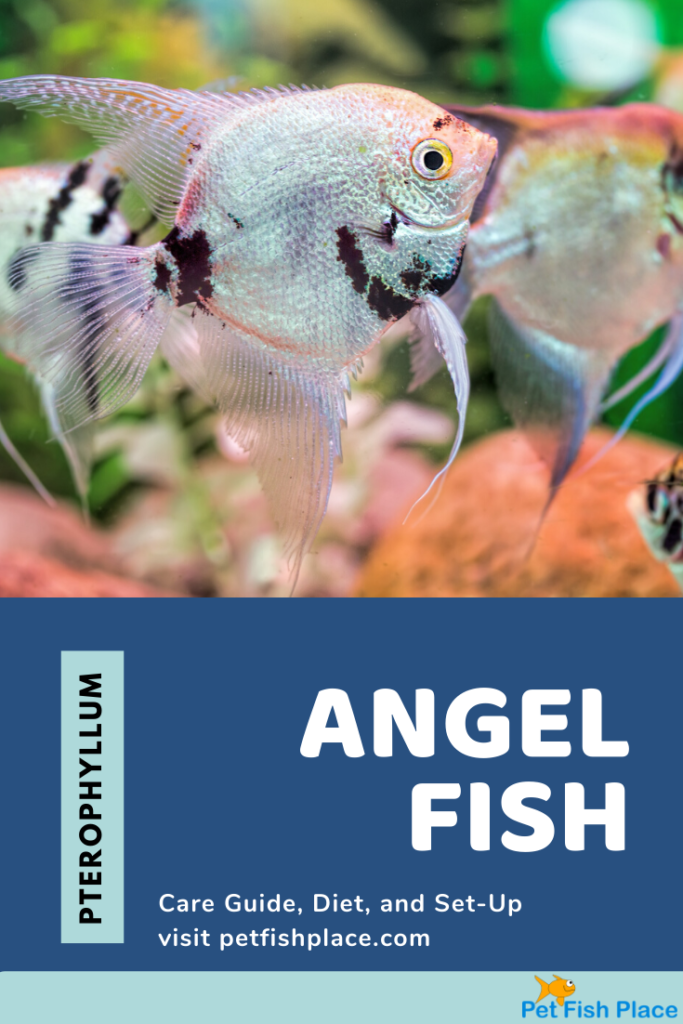
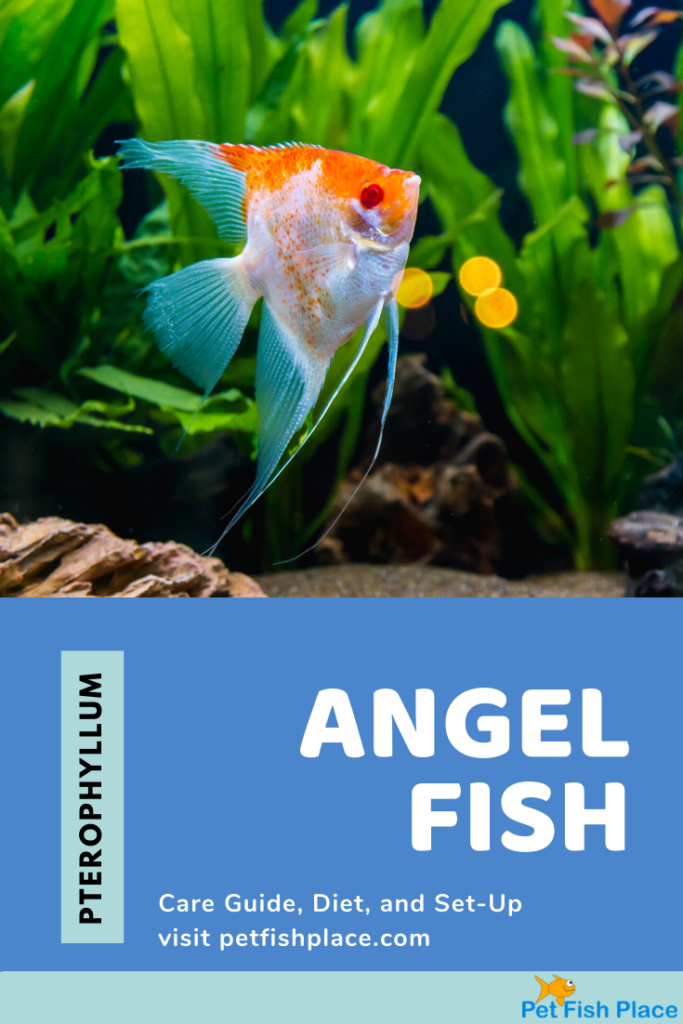
Sharing is caring!

